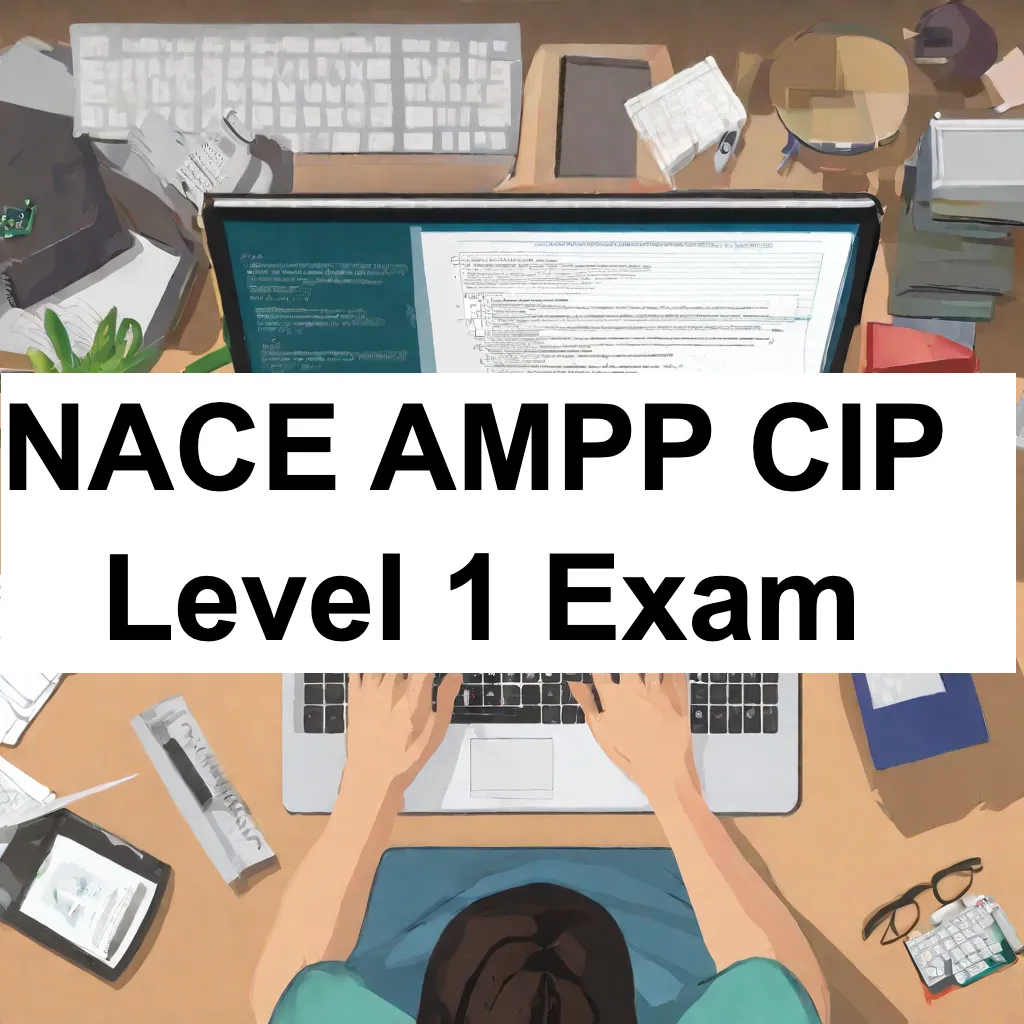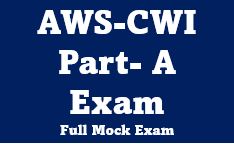NACE AMPP CIP 1 Practice Exam
Check the below link for NACE AMPP CIP 1 Practice Exam & pass the CIP Level 1 theory exam easily.
— Take NACE AMPP CIP Level -1 Mock Exam Online —

- A decrease in temperature will generally cause the corrosion rate to:
I. increase.
II. decrease.
III. remain constant.
A. I only
B. II only
C. III only
D. I, II and III - Dew point is the temperature at which:
A. moisture vapor evaporates.
B. moisture vapor condenses.
C. moisture vapor increases.
D. corrosion is slowed down. - Dew point is measured and calculated by using:
A. steel surface thermometer.
B. humidity indicator strips.
C. sling psychrometer.
D. anemometer. - Steel surface temperature during coating application should be:
A. the same as dew point temperature.
B. at least 5°F (about 3°C) below dew point temperature.
C. at least 5°F (about 3°C) above dew point temperature.
D. no more than 5°F (about 3°C) above dew point temperature. - A sling psychrometer directly measures:
A. relative humidity.
B. ambient temperature and wet bulb temperature.
C. substrate temperature and wet bulb temperature.
D. dew point. - Coating operations should NOT take place unless the substrate surface temperature is At least:
A. 40F (20C) higher than the dew point temperature.
B. 5° F (3° C) higher than the dew point temperature.
C. 5° F (3° C) lower than the dew point temperature.
D. 5° F (3° C) above freezing. - ISO 8503-1 comparators are available for which of the following abrasives?
I. Sand
II. Grit
III. Shot
A. I & II only
B. I & III only
C. II & III only
D. I, II and III only - Workers exposed to hazardous levels of free silica dust such as released during the sand blast cleaning process, may develop silicosis, which is a disease of the:
A. liver.
B. heart.
C. lungs.
D. stomach. - The presence of certain salt deposits such as ferrous sulfate or ferrous hydroxides may be determined by which of the following?
A. Visual inspection
B. Test papers or chemical test kits
C. Magnetic pull-off DFT gauge
D. Low voltage DC (wet sponge detector) - The cathode of a corrosion cell:
A. dissolves in the electrolyte.
B. does nothing.
C. has an opposite electrical polarity to the anode.
D. is not considered to be part of the corrosion cell. - Nozzle pressure for manual blast cleaning is generally accepted to be:
A. 65 to 90 psi
B. 90 to 100 psi
C. 130 to 150 psi
D. 130 psi and above - Extra-coarse Testex replica tape is used when it is expected that the depth of the anchor pattern/surface profile to be measured will be 3 mils (75 microns).
A. True
B. False - When following a specification for surface preparation standards, the inspector should NOT:
A. ensure specified cleanliness standard is used.
B. ensure surface is prepared as specified.
C. require a cleaner surface than specified.
D. verify that only specified materials are used. - If the coating inspector finds that the coating was applied thicker than specified, he/she should:
A. advise contractor and owner’s representative immediately.
B. use good judgment in deciding whether or not deviation from the specification is allowable.
C. require that the area be blasted down to bare metal and recoated.
D. call the coating manufacturer to solve the problem. - If the desired DFT of a coating is 100 microns (4 mils), what wet film thickness will be required if the coating contains 100% volume solids?
A. 50 microns (2 mils)
B. 75 microns (3 mils)
C. 100 microns (4 mils)
D. 150 microns (6 mils) - A well-written coating specification should contain information regarding:
I. surface preparation standards, II. safety.
III. locations to be coated.
A. I only
B. II only
C. III only
D. I, II and III - The coating inspector should require white metal surface preparation if:
A. immersion surface is required.
B. chemical resistance is required.
C. the specification calls for white metal.
D. the manufacturer’s product data sheet recommends white metal. - The requirements of a project should be defined by the:
A. coating inspector.
B. coating contractor.
C. project engineer.
D. coating specification. - 33 feet is approximately how many meters?
A. 10
B. 15
C. 20
D. 30 - It is the coating inspector’s responsibility to:
A. recommend suitable protective coating systems for each job.
B. be sure that the most economical bid for coatings is obtained.
C. be sure that the coatings used are the specified coatings.
D. take the pre-job meeting minutes. - The coating inspector’s responsibility is to:
A. verify compliance with specification requirements.
B. adapt the specification to the realities of the situation.
C. be the expert on coatings.
D. direct the contractors safety meetings. - An inspector’s primary duty is to:
I. observe actions of the contractor.
II. report actions of the contractor.
III. document actions of the contractor.
IV. enforce all safety rules.
A. I only
B. I, and II only
C. I, II and III only
D. I, II and IV only - Inspection of mixing and thinning operations is important:
A. only when zinc rich coatings are used.
B. only when inorganic zinc coatings are used.
C. only when a new applicator is starting work.
D. every time mixing and thinning is performed. - Corrosion is slower in hot environments than in cool ones.
A. True
B. False
Answers
| Question No | Answer | Question No | Answer | Question No | Answer |
| 1 | B | 9 | B | 17 | C |
| 2 | B | 10 | C | 18 | D |
| 3 | C | 11 | B | 19 | D |
| 4 | C | 12 | B | 20 | C |
| 5 | B | 13 | C | 21 | A |
| 6 | B | 14 | A | 22 | C |
| 7 | C | 15 | C | 23 | D |
| 8 | C | 16 | D | 24 | B |





